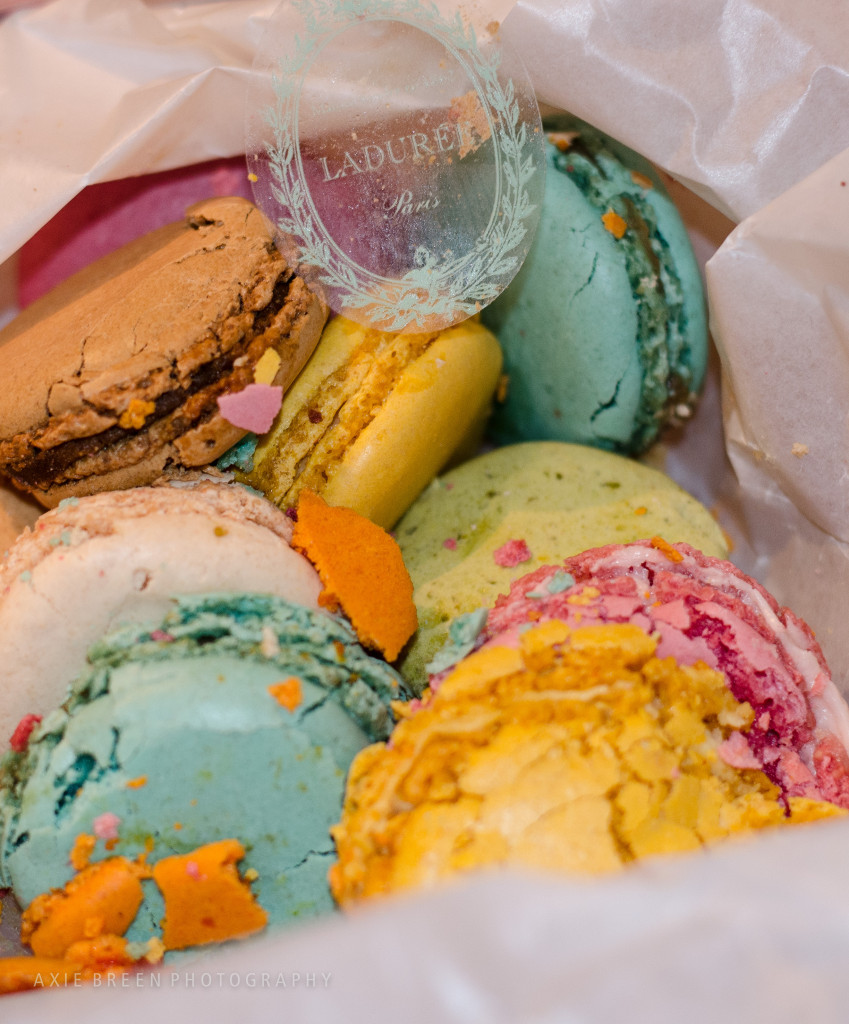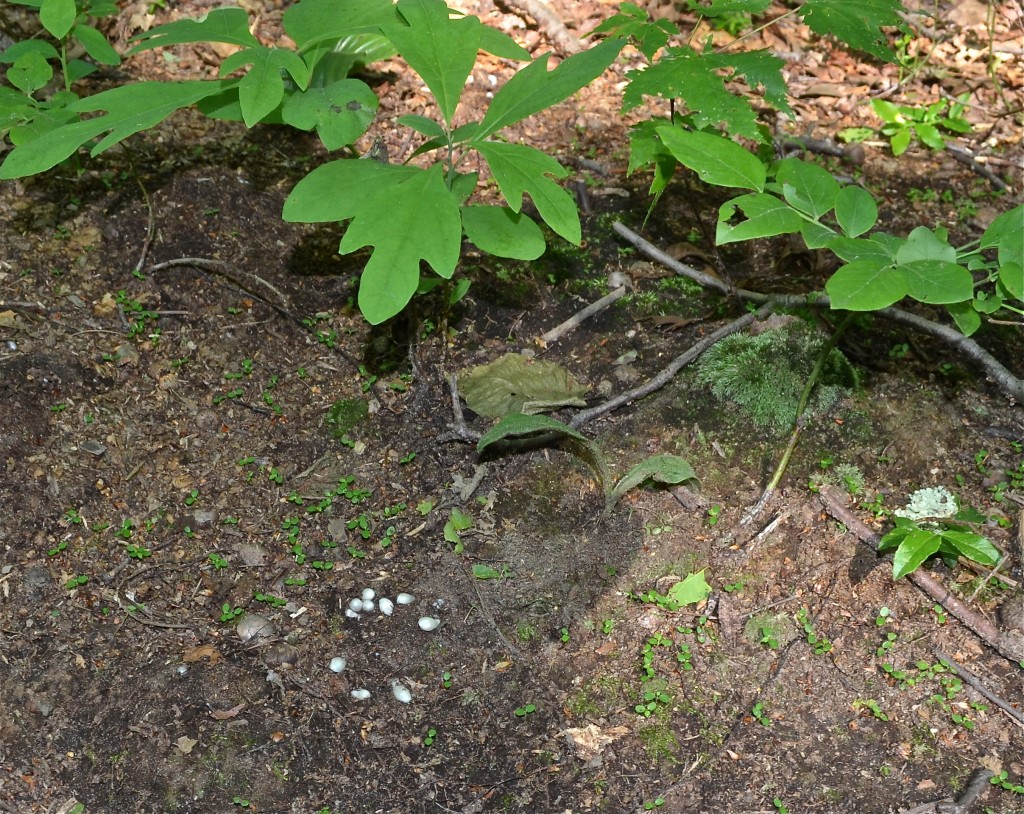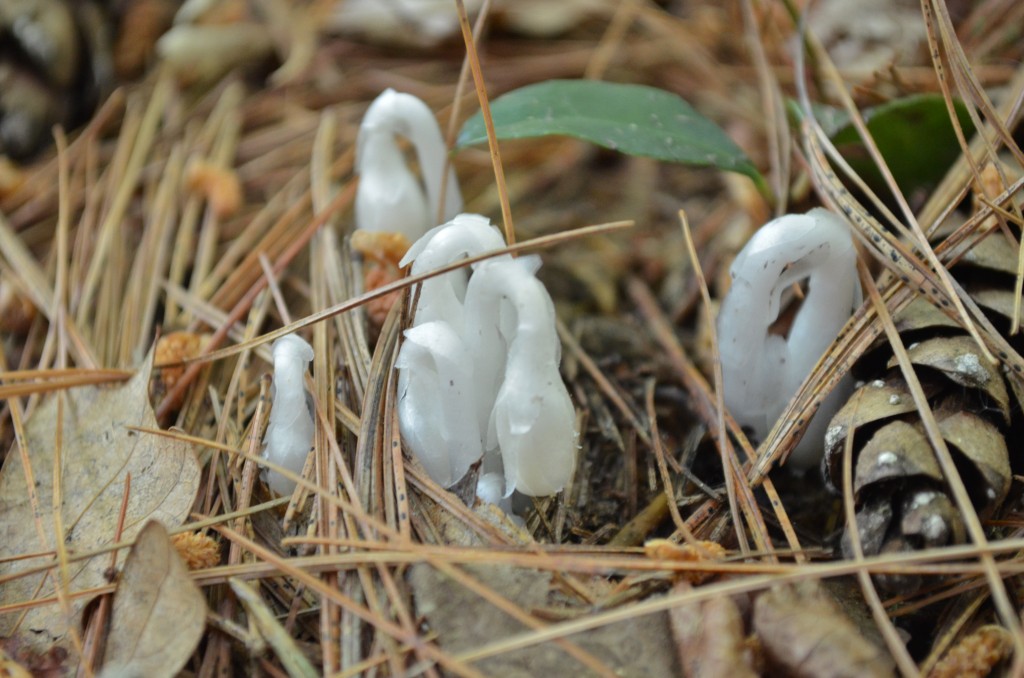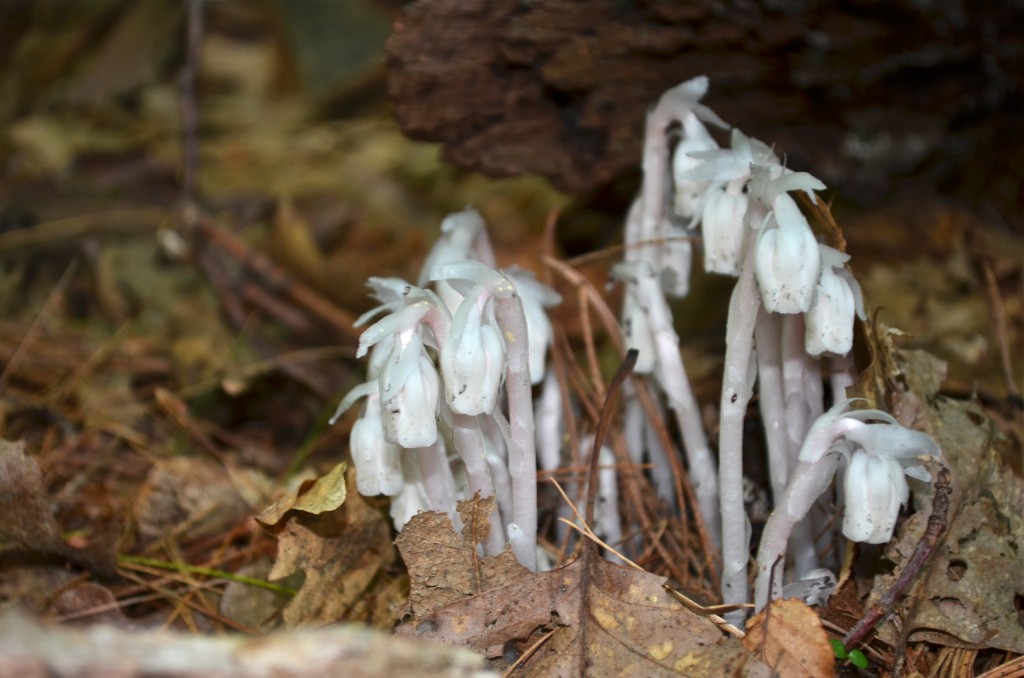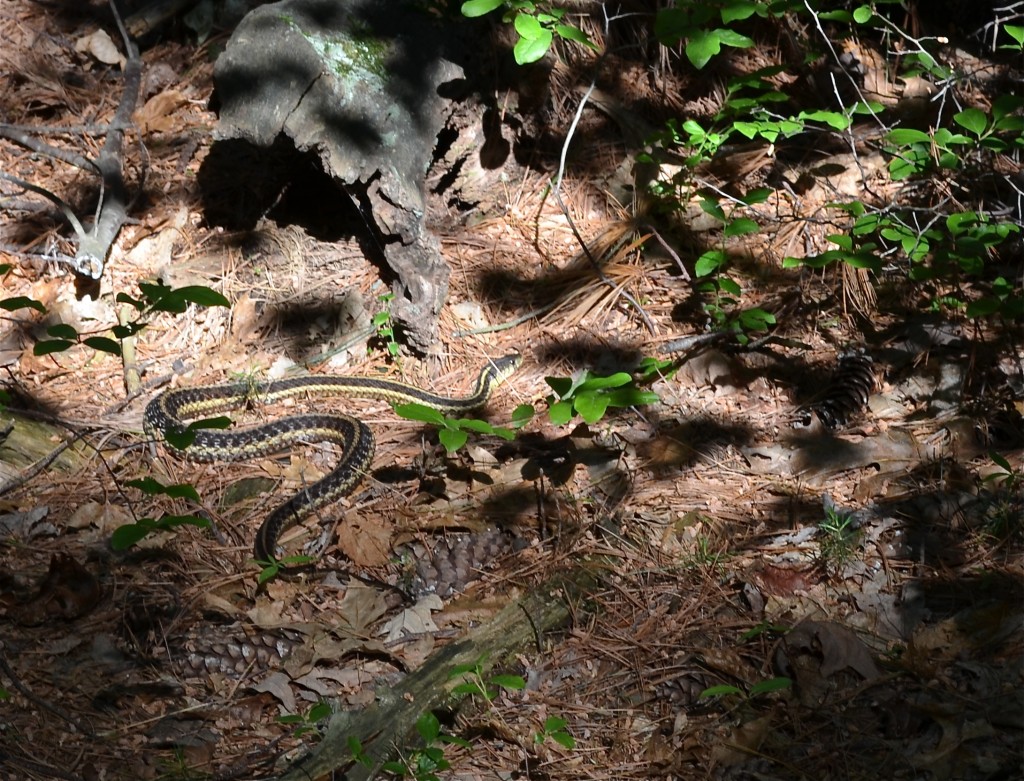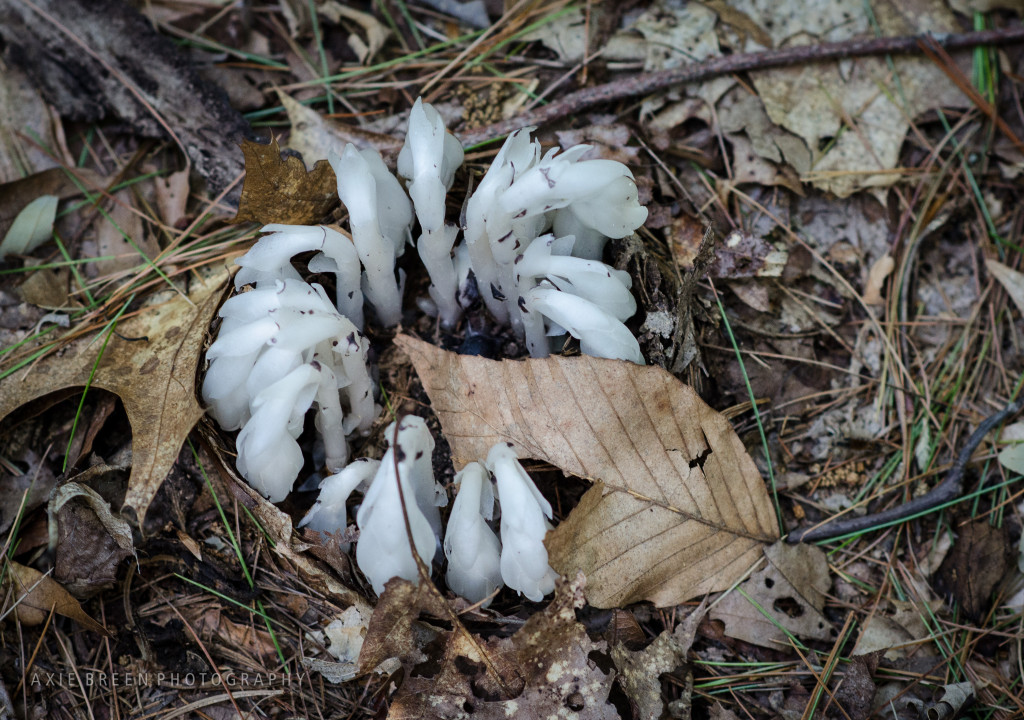 Indian Pipe is not a fungus. It’s a flowering plant related to Rhododendrons and blueberries, which sounds very improbable. This plant does not have chlorophyll to make its nutrients, so it lives parasitically by tapping into fungi that live in the soil (and are obtaining THEIR nutrients from tree roots, usually beech and pines). So they can grow in the dark because they don’t use the sun. And, they can’t be transplanted, because they need their connection to the underground fungus, which needs its tree roots. There is a Cherokee story that the Great Spirit was displeased with a council of elders who had quarreled with each other, and changed the old chiefs, with their bowed heads, into these flowers to remind the people to make peace. Native.
Indian Pipe is not a fungus. It’s a flowering plant related to Rhododendrons and blueberries, which sounds very improbable. This plant does not have chlorophyll to make its nutrients, so it lives parasitically by tapping into fungi that live in the soil (and are obtaining THEIR nutrients from tree roots, usually beech and pines). So they can grow in the dark because they don’t use the sun. And, they can’t be transplanted, because they need their connection to the underground fungus, which needs its tree roots. There is a Cherokee story that the Great Spirit was displeased with a council of elders who had quarreled with each other, and changed the old chiefs, with their bowed heads, into these flowers to remind the people to make peace. Native.
Indian Pipe, Ghost Plant, Corpse Plant (Monotropa uniflora)
The bonus picture, totally unrelated: B’s boss had been given some sweets by a friend who had just been in Paris. He was having trouble giving them away at the office! B brought them home to me. First I saw the label: Ladurée Paris! Only the world’s most famous maker of macarons! And that’s what they are!

